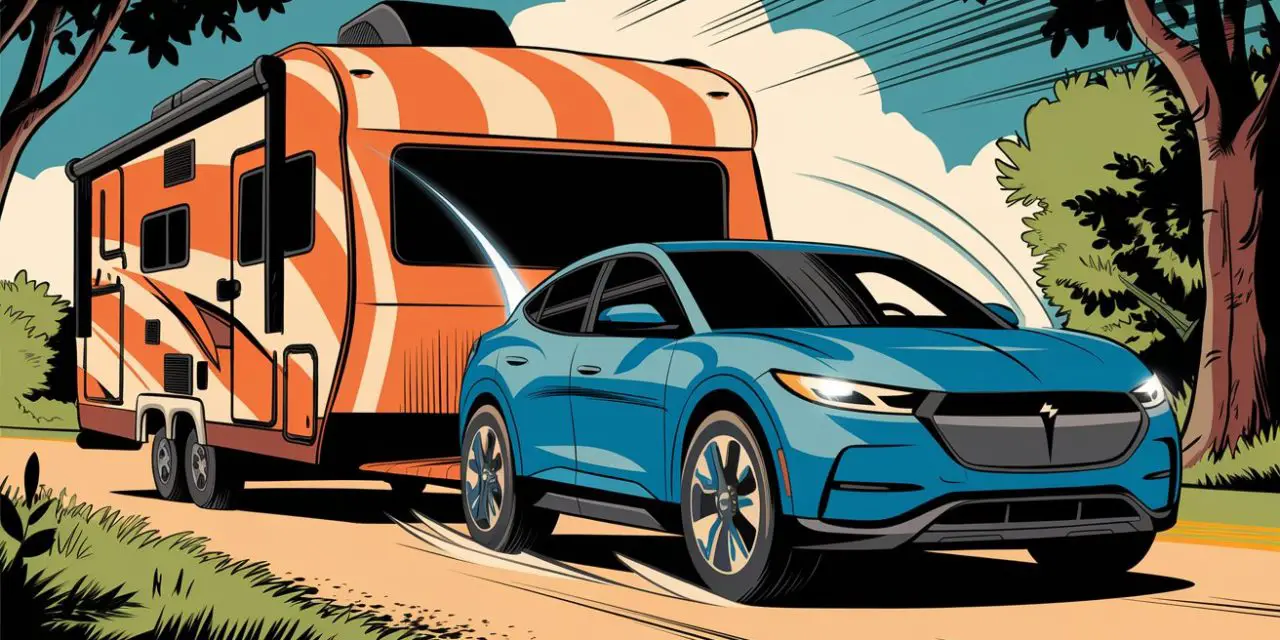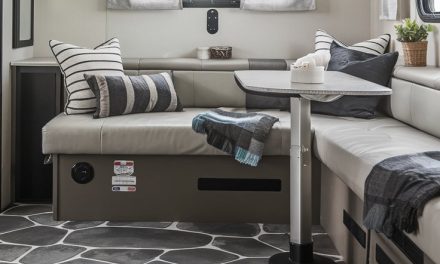Would you like to save this article?
Thinking about hitting the open road in your RV and bringing your electric car along for the adventure? You’re not alone! Many RV owners are curious if they can tow their electric vehicle (EV) just like a regular car. The answer, though, is a bit more complicated than you might think. From battery technology to towing laws, there are a lot of things to consider before you hitch up your EV. In this article, we’ll break down the facts, bust some myths, and even throw in a few laughs along the way. Buckle up—here’s everything you need to know about the big question: can an electric car be towed behind an RV?
1. Not All Electric Cars Are Created Equal (When It Comes to Towing)
Some cars are born to run, but not all are born to be towed! Most electric vehicles (EVs) are not designed to be flat towed (with all four wheels on the ground). This is because their electric motors and regenerative braking systems can be damaged if the wheels spin without the car’s systems being powered on and properly managed. In fact, many EV owner’s manuals specifically say you should never flat tow the car, or you might end up with a very expensive repair bill.
- Some front-wheel-drive (FWD) EVs can be towed with their front wheels up on a dolly, but even this isn’t always recommended.
- All-wheel-drive (AWD) and rear-wheel-drive (RWD) EVs are almost never safe to tow with any wheels on the ground.
- The safest way to move an EV? Put it on a flatbed trailer where none of the wheels touch the road.
- Always check your owner’s manual before making any towing plans.
If you try to flat tow most EVs, you might as well just tow your wallet behind the RV and let it slowly empty itself!
2. Regenerative Braking: A Shocking Surprise
Electric cars use regenerative braking, which means when the wheels spin, they actually generate electricity and send it back to the battery. Sounds cool, right? But here’s the catch: if you tow an EV with the wheels spinning, you could overload the system and fry some very expensive electronics. The car’s computer isn’t designed to handle all that power unless it’s in the right mode—and most EVs don’t have a “towing mode.”
- Regenerative braking can damage the battery and motor if not managed properly1.
- Some EVs lock the wheels when powered off, making towing impossible anyway3.
- There are a few patents out there for “free-wheel” or “tow” modes, but these are not in most cars yet4.
Regenerative braking is great for saving energy—unless your car thinks you’re trying to break the world record for most unwanted electricity!
3. Flat Towing: Still a No-Go for Most EVs
Flat towing (all four wheels on the ground) is a classic RV trick, but it’s almost never safe with electric cars. The reason? Unlike gas cars, EVs don’t have traditional transmissions or neutral gears, so the motor is always connected to the wheels. Spinning those wheels can cause wear, overheating, and even permanent damage.
- Flat towing is forbidden by most EV manufacturers.
- Some older models (like certain early Teslas) could technically be towed, but it’s still not recommended1.
- If you see someone flat towing an EV, they’re either a daredevil or didn’t read the manual!
Flat towing an EV is like trying to walk your cat on a leash—technically possible, but you’re just asking for trouble!
4. Tow Dollies: The Middle Ground (Sort Of)
A tow dolly lifts the drive wheels off the ground, which can make towing some front-wheel-drive EVs possible3. But even then, you need to be careful. Many EVs have parking brakes that automatically engage when the car is off, locking the wheels and making dolly towing impossible3. Always double-check your car’s manual and talk to the dealer before you try this.
- Only a few FWD EVs can be dolly towed, and even then, only under certain conditions.
- Rear-wheel-drive and all-wheel-drive EVs should never be dolly towed.
- Using a dolly adds length and width to your towing setup, making turns and parking trickier.
Using a tow dolly with an EV is like trying to fit a square peg in a round hole—sometimes it works, but don’t be surprised if you get stuck!
5. Trailers: The Gold Standard for EV Towing
If you really want to bring your electric car on your RV adventure, the safest way is to use a flatbed trailer. This keeps all four wheels off the ground and avoids any risk of damaging the motor or battery. It’s also the method recommended by every EV manufacturer.
- Flatbed trailers prevent any wheel movement, protecting your EV’s sensitive parts.
- Trailers are heavier and take up more space, but they’re worth it for peace of mind.
- You’ll need to check your RV’s towing capacity—EVs are heavier than most gas cars because of their batteries.
A flatbed trailer is like a comfy bed for your EV—just don’t expect it to leave a mint on the pillow!
6. The Future: Automakers Are Working on It!
Good news! Some car companies are trying to solve the EV towing problem. Rivian and Stellantis have filed patents for “free-wheel” or “tow” modes that could let you safely tow an EV behind your RV in the future. Ford has even suggested that EVs could be charged while being towed, turning your road trip into a rolling science experiment4.
- These features aren’t available in most cars yet, but they might be soon4.
- Until then, stick to trailers and dollies (if your car allows it).
Maybe one day your EV will tow itself behind your RV—until then, let’s leave the science fiction to the movies!
7. Always Double-Check: Owner’s Manual is King
Before you hook up your EV to your RV, always check the owner’s manual. Every car is different, and what works for one model might ruin another. If you’re not sure, call your dealer or the manufacturer’s customer service line. It’s better to ask a “dumb” question than to make a very expensive mistake.
- Manuals have the most up-to-date info for your specific car.
- Don’t trust internet rumors—get your facts straight from the source.
The owner’s manual is like a treasure map—ignore it, and you might find yourself lost in a sea of repair bills!
Sources
- Reddit: Flat tow Electric Vehicle?
- Green Car Reports: Stellantis and Rivian working on flat towing for EVs
- New Image Towing: Why Can’t Electric Cars Be Towed?
- RV Parts Plus: Selecting an EV to Tow





